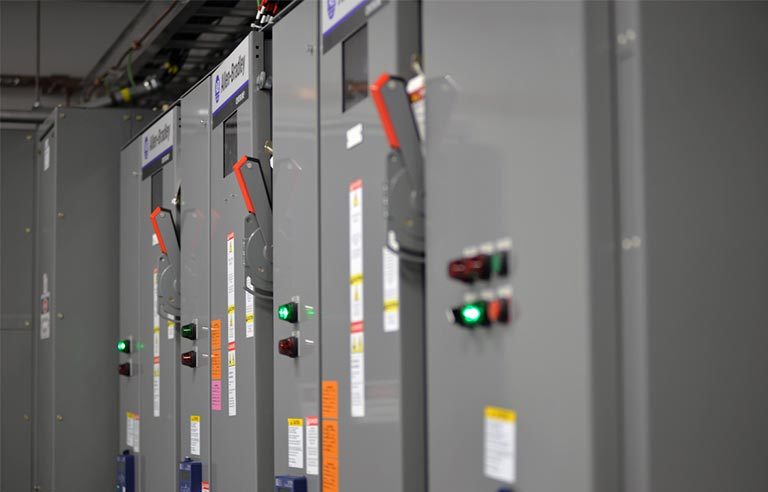Proper installation of arc-resistant equipment
How do I navigate the implementation of medium-voltage arc-resistant equipment?

Responding is John A. Kay, C.E.T., Institute of Electrical and Electronics Engineers fellow and principal engineer, Rockwell Automation, Milwaukee.
Arc-resistant equipment such as medium-voltage control centers can help protect workers from dangerous arc flashes. Unfortunately, many users of this type of equipment compromise its protection capabilities because of a crucial problem: improper or incomplete installation.
When arc-resistant equipment isn’t installed according to the manufacturer’s specifications, its protection capabilities can be seriously compromised. As a result, workers who believe they’re being protected by the equipment are put at risk of being exposed to an arc-flash event.
To make certain arc-resistant equipment is installed correctly, users need to understand the product and the importance of correctly following the installation requirements. They then need to take specific actions to ensure the equipment is correctly installed and implemented.
Understanding the problem
Many companies that install and apply arc-resistant equipment aren’t completely familiar with the arc-resistant products they’ve purchased. As a result, they don’t understand how improper installation practices impact the products’ safety performance.
Put simply, arc-resistant products contain and control the pressurized byproducts from an arc event and then safely ventilate them away from personnel. However, this technology will perform as intended only if it’s installed in accordance to the manufacturer’s requirements.
Too often, because of a lack of knowledge or understanding of arc-resistant products, electrical contractors don’t follow the specific installation requirements. Instead, they revert to the installation practices they use to save time and money when installing other electrical equipment. These practices may include, but aren’t limited to, leaving screws out of panels, not using or replacing the supplied cover plates where wires enter, using oversized or misaligned conduits, and not properly installing or sealing the arc-gas duct system.
These might be common shortcuts for some standard electrical installation jobs, but they’re bad practices when installing arc-resistant equipment. Why? Because they create openings in what’s effectively supposed to be a sealed system of enclosures and arc-gas control devices. If an arc event does occur, pressurized arc gases will seek the point of least resistance. This could mean extremely hot gases and vaporized metals escaping through unintended openings, harming workers, damaging other nearby equipment, or igniting dust or other flammable components.
Taking measurable and sustainable actions
Users of arc-resistant equipment can take several steps to help ensure their electrical contractors correctly install it.
Always include the equipment vendor’s installation documentation in any installation request for quotes. This provides the contractor with an upfront understanding of the scope of work for the installation. The contractor then can properly plan for any additional time and effort required, compared with other non-arc-resistant electrical installations.
Users should also work with the arc-resistant equipment vendor, who can answer any questions about the application and installation of the arc-resistant technology. The vendor can provide helpful documentation and pictures that can be included with the contractor’s RFQ.
Although electrical standards don’t yet provide specific guidance for installing arc-resistant equipment, they do require that it be properly installed to the vendor’s requirements. Specifically, the latest version of NFPA 70E requires that users ensure the equipment is properly installed and maintained. The phrase “properly installed” means the equipment is installed in accordance with applicable industry codes and standards, as well as the manufacturer’s recommendations.
Users should also update their electrical safety programs to include a process for verifying the equipment has been properly installed and ongoing maintenance and inspection requirements are met.
Protecting workers and your equipment investment
Correctly installed and maintained arc-resistant equipment is an important tool in your safety program, protecting workers, reducing safety incidents, and supporting the equipment’s short- and long-term safety capabilities – all of which can affect a corporation’s bottom line. Don’t let your investment be compromised by shortcuts or mistakes in the installation process.
Editor's note: This article represents the independent views of the author and should not be construed as a National Safety Council endorsement.
Post a comment to this article
Safety+Health welcomes comments that promote respectful dialogue. Please stay on topic. Comments that contain personal attacks, profanity or abusive language – or those aggressively promoting products or services – will be removed. We reserve the right to determine which comments violate our comment policy. (Anonymous comments are welcome; merely skip the “name” field in the comment box. An email address is required but will not be included with your comment.)

